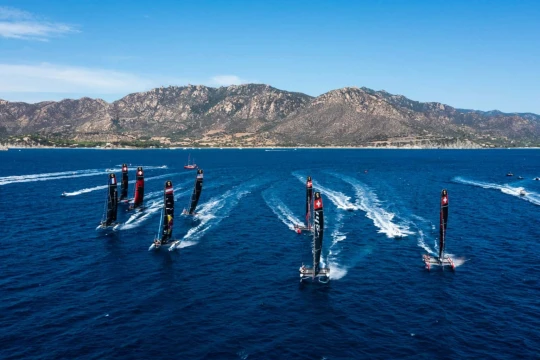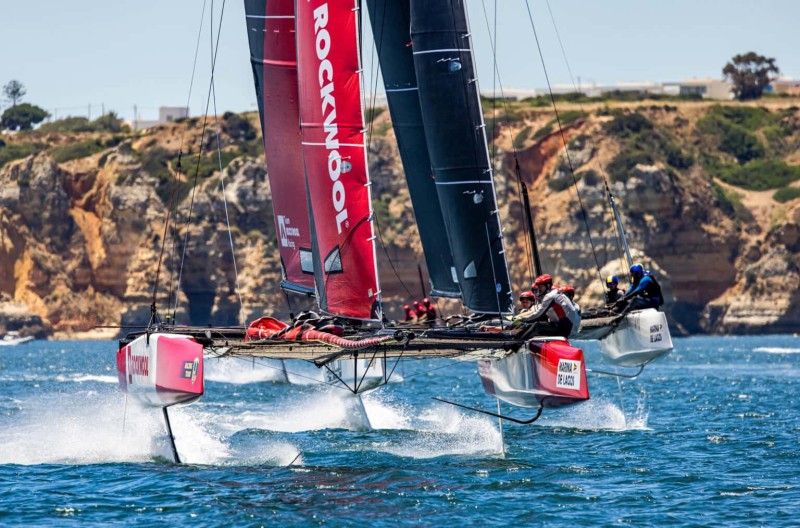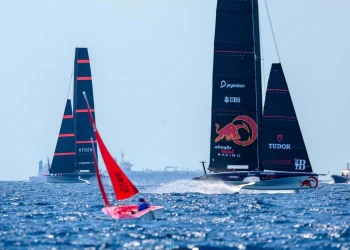
Reducing risk to keep crews and equipment safe on board the GC32
Reducing risk to keep crews and equipment safe on board the GC32
This article was produced for World Sailing by Christian Scherrer, GC32 Class Manager, as part of our ongoing series to highlight safety procedures across the sport.
At a fundamental level the boat’s design is key. While the GC32 does not have racks to act as a buffer, its J foils face inboard beneath the catamaran’s netting and any injury that has occurred (two cases in 10 years) have been when the helmsman has fallen overboard and collided with the inverted T-configuration rudder elevator. The foil configuration on the GC32 is naturally damping (rather than electronically) and a practiced crew, including someone familiar with the foil’s rake control, is capable of stable flight. Obviously the GC32 being a catamaran means there is always the potential for capsize, although this happens marginally less than with non-foiling cats and more often occurs laterally, rather than pitchpoling.

The most common injuries to befall GC32 crew have occurred from falling overboard or from major deceleration. To counter this, all are obliged to wear body armour and helmets. The class has worked closely with its partner Forward WIP on this equipment.
Substantial steps have been made in on the water safety. First the GC32 Racing Tour employs its own safety officer, who is permanently on the racecourse, supported by a qualified diver. Since there are three umpire boats and all of the teams have support boats/RIBs and will always rally to help another team, the safety officer has considerable resources at his disposal, for example to right capsized catamarans. All involved with the Tour are also thoroughly briefed in how safety procedures work, including lines of communication via the PRO. The local hosts will have a system in place in the event they are obliged to call in an ambulance, including a meeting spot ashore, etc. Meetings are held daily where the safety officer briefs everyone in charge of a vessel in or around the race area to ensure that rules are followed.
The GC32 Racing Tour has also developed its own race area format to ensure safety. GC32s race windward-leewards either with a conventional upwind start or a reaching start going into what becomes the port weather gate mark. Thus, the race area has a hexagonal-shaped perimeter. Strict rules are enforced in terms of which vessels can venture on to the racecourse (i.e., race officials, umpires, TV boat); where team ribs can be (i.e., just inside the perimeter) and where all other craft should be (i.e., beyond the perimeter). All official vessels, including team RIBs have flags clearly identifying them. The perimeter is policed by course marshals and races are abandoned if an unauthorised vessel ventures on to the race area.





